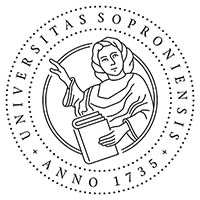Trends and Issues on STEM and STEAM Education in Early Childhood
DOI:
https://doi.org/10.17165/TP.2019.3-4.8Abstract
The research aims to focus on Thai national and international studies regarding STEM and STEAM education in early childhood education. After a detailed search by using the five databases, 33 researches published during 2008 and 2018 were accessed and analyzed using content analysis. The research finding signifies that STEM and STEAM education in early childhood classrooms have aroused both Thai national and international interest from an educational perspective to prepare students for the 21st century. Furthermore, classroom implementation and instruction design to incorporate STEM and STEAM education have been more challenging to fulfill the expected benefits, such as, effective of learning both formal and informal education, building of STEM literacy, preparing of professional development of preservice and in-service teacher.
Literaturhinweise
Aldemir J.& Kermani H. (2016). Integrated STEM curriculum: improving educational outcomes for Head Start children. Early Child Development and Care, Vol. 187, no. 11, 1-13. p. DOI: https://doi.org/10.1080/03004430.2016.1185102
Atiles, J. T., Jones, J. L., & Anderson, J. A. (2013). More than a read-aloud: Preparing and inspiring early childhood teachers to develop our future scientists. Teacher Education and Practice, Vol. 26, no. 2, 285-299. p.
Bagiati, A., & Evangelou, D. (2015). Engineering curriculum in the preschool classroom: the teacher's experience. European Early Childhood Education Research Journal, Vol. 23, no. 1, 112-128. p. DOI: https://doi.org/10.1080/1350293X.2014.991099
Bennett J, Lubben F, Hogarth S, Campbell B and Robinson A. (2004). A systematic review of the nature of small-groups discussions in science teaching aimed at improving students' understanding of evidence: Review summary. UK: University of York.
Bers, M. U., Seddighin, S., & Sullivan, A. (2013). Ready for robotics: Bringing together the T and E of STEM in early childhood teacher education. Journal of Technology and Teacher Education, Vol. 21, no. 3, 355-377. p.
Committee on STEM Education and National Science and Technology Council. (2013). Federal Science, Technology, Engineering, and Mathematics: STEM Education 5-Year Strategic plan (Online). forrás (9 November 2018).
DeJarnette K.N. (2018). Implementing STEM in the Early Childhood classroom. European Journal of STEM education, Vol. 3 No. 3, 18-27.p. DOI: https://doi.org/10.20897/ejsteme/3878
Guyotte, K. W., Sochacka, N. W., Costantino, T. E., Walther, J., & Kellam, N. N. (2014).
STEAM as social practice: Cultivating creativity in transdisciplinary spaces. Art Education, Vol. 67, no. 6, 12-19. p. DOI: https://doi.org/10.1080/00043125.2014.11519293
Kelley, T. R., & Knowles, J. G. (2016). A conceptual framework for integrated STEM education. International Journal of STEM Education, Vol. 3, no. 1, 1-11. p. DOI: https://doi.org/10.1186/s40594-016-0046-z
Kim, Y., & Park, N. (2012). The effect of STEAM education on elementary school student's creativity improvement. In: Computer Applications for Security, Control and System Engineering. UK: Springer DOI: https://doi.org/10.1007/978-3-642-35264-5_16
Moomaw, S., & Davis, J. A. (2010). STEM comes to preschool. Young Children, Vol. 65, no. 5, 1-12. p.
National Research Council, (2011). Successful K-12 STEM education: Identifying effective approaches in science, technology, engineering and mathematics. Washington, DC: The National Academic Press.
National Scientific Council on the Developing Child. (2007). The Science of Early Childhood Development: Closing the Gap Between What We Know and What We Do (Online). forrás (9 November 2018).
Neuman L. W. (2014). "What are the Major Types of Social Research?" in Research Method: Qualitative and Quantitative Approached (7th Edition). USA: Pearson Education Limited.
Office of the Education Council. (2016). The National Scheme of Education B.E. 2560-2579 (2017-2036). Bangkok : OEC.
Quigley, C. F., & Herro, D. (2016). "Finding the joy in the unknown": Implementation of STEAM teaching practices in middle school science and math classrooms. Journal of Science Education and Technology, Vol. 25, no. 3, 416-438. p. DOI: https://doi.org/10.1007/s10956-016-9602-z
Sochacka, N. W., Guyotte, K., & Walther, J. (2016). Learning together: A collaborative autoethnographic Exploration of STEAM (STEM+ the Arts) Education. Journal of Engineering Education, Vol. 105, no.1, 15-42. p. DOI: https://doi.org/10.1002/jee.20112
Spector, J. M. (2015). Foundations of educational technology: Integrative approaches and interdisciplinary perspectives (2nd ed.). New York: Routledge. DOI: https://doi.org/10.4324/9781315764269
Thammaprateep J. and Chartisathian C. (2018). STEM Collaborative Teacher Professional Development: Preschool Teachers' Understanding and Teaching Practice. Journal of Rangsit University: Teaching&Learning, Vol. 12, no. 1, 82-95. p.
Vasinee, I. (2010). Parents' Knowledge and Understanding of Integrated STEM Education with Arts and Ethics (ESTEAM): A Case Study of Srinakharinwirot University Prasarnmit Elementary Demonstration School. Kasem Bundit Journal. Vol. 17, no. 2, 97-115. p.
Vasquez, J. A., Comer, M., & Sneider, C. (2013). STEM lesson essentials: Integrating science, technology, engineering and mathematics. Portsmouth, NH: Heinemann Publications.
Downloads
Veröffentlicht
Ausgabe
Rubrik
Lizenz
Copyright (c) 2019 Sureeporn Sawangmek

Dieses Werk steht unter der Lizenz Creative Commons Namensnennung - Nicht-kommerziell - Keine Bearbeitungen 4.0 International.








